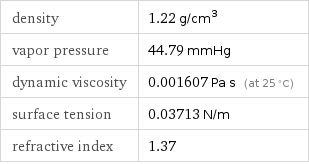Input interpretation

formic acid
Chemical names and formulas

formula | HCOOH Hill formula | CH_2O_2 name | formic acid alternate names | myrmicyl mass fractions | C (carbon) 26.1% | H (hydrogen) 4.38% | O (oxygen) 69.5%
Lewis structure

Draw the Lewis structure of formic acid. Start by drawing the overall structure of the molecule, ignoring potential double and triple bonds: Count the total valence electrons of the carbon (n_C, val = 4), hydrogen (n_H, val = 1), and oxygen (n_O, val = 6) atoms: n_C, val + 2 n_H, val + 2 n_O, val = 18 Calculate the number of electrons needed to completely fill the valence shells for carbon (n_C, full = 8), hydrogen (n_H, full = 2), and oxygen (n_O, full = 8): n_C, full + 2 n_H, full + 2 n_O, full = 28 Subtracting these two numbers shows that 28 - 18 = 10 bonding electrons are needed. Each bond has two electrons, so in addition to the 4 bonds already present in the diagram add 1 bond. To minimize formal charge oxygen wants 2 bonds and carbon wants 4 bonds. Identify the atoms that want additional bonds and the number of electrons remaining on each atom: Fill in the 1 bond by pairing electrons between adjacent highlighted atoms: Answer: | |
3D structure

3D structure
Basic properties

molar mass | 46.025 g/mol phase | liquid (at STP) melting point | 8.3 °C boiling point | 100.5 °C density | 1.22 g/cm^3 solubility in water | miscible dielectric constant | 58.5
Hydrophobicity and permeability properties

experimental LogP hydrophobicity | -0.54 predicted LogP hydrophobicity | -0.46 predicted LogS | 1.02
Basic drug properties

approval status | experimental | small molecule drug categories | antibacterial agent
Liquid properties (at STP)

density | 1.22 g/cm^3 vapor pressure | 44.79 mmHg dynamic viscosity | 0.001607 Pa s (at 25 °C) surface tension | 0.03713 N/m refractive index | 1.37
Units
